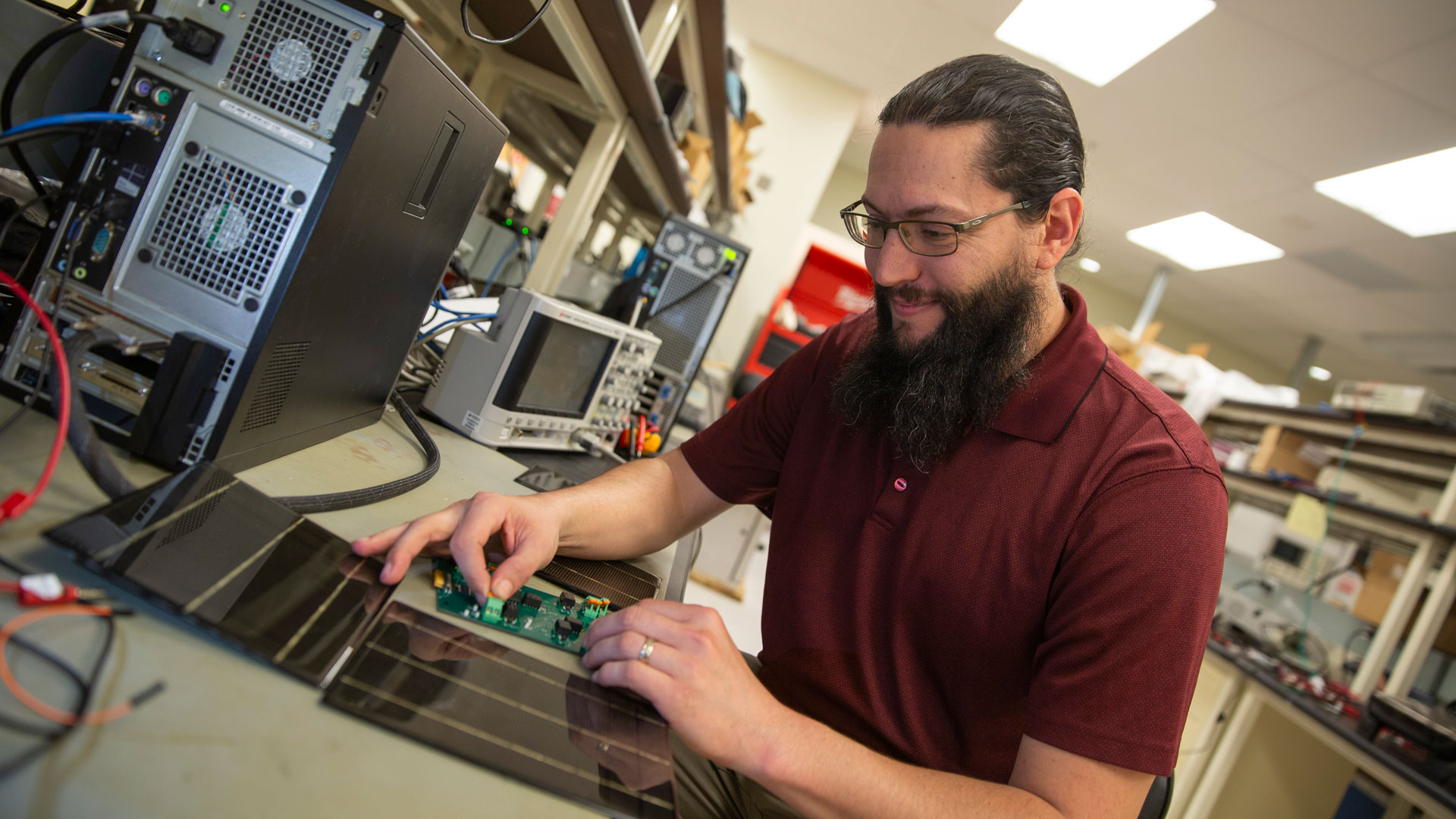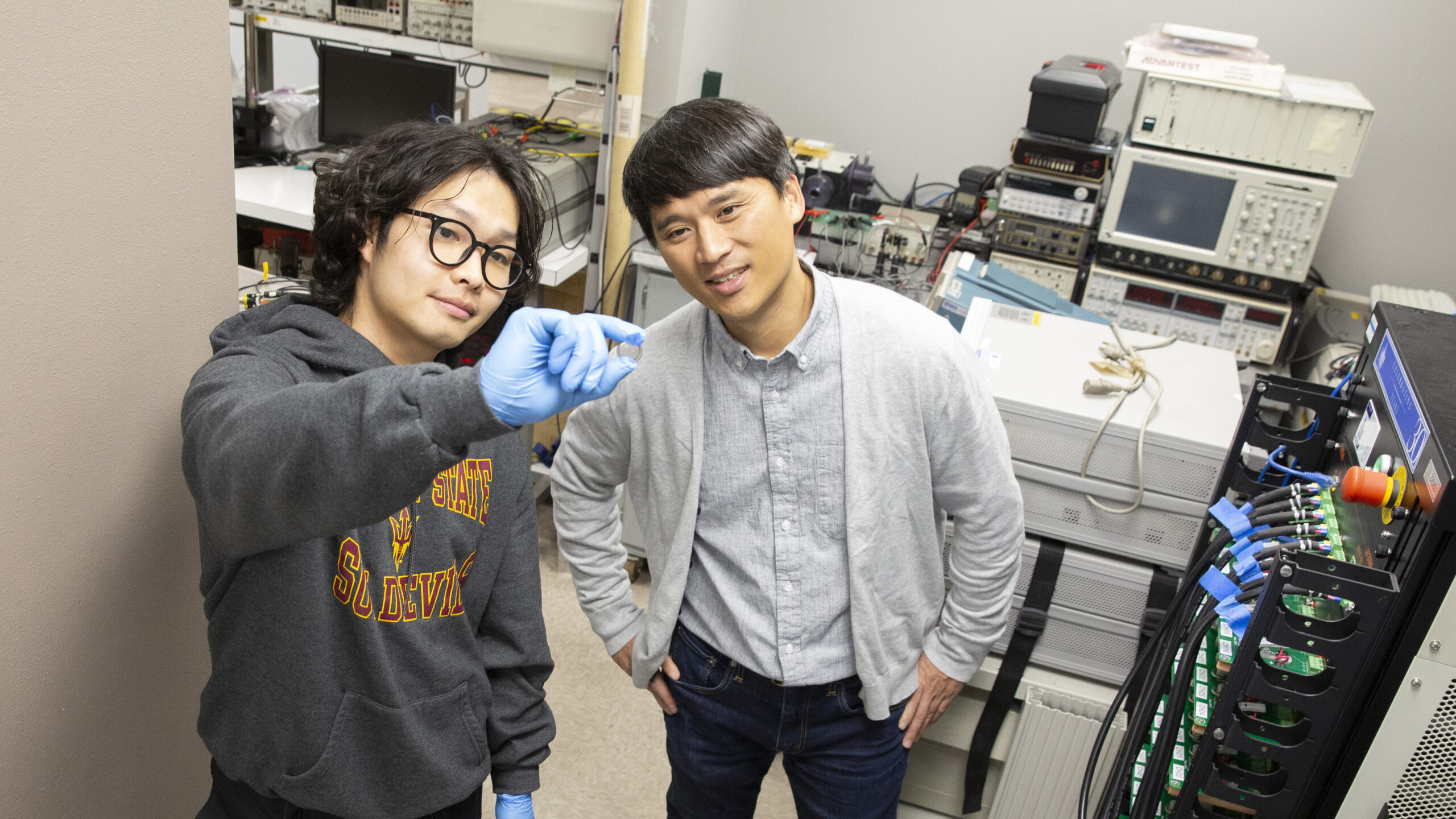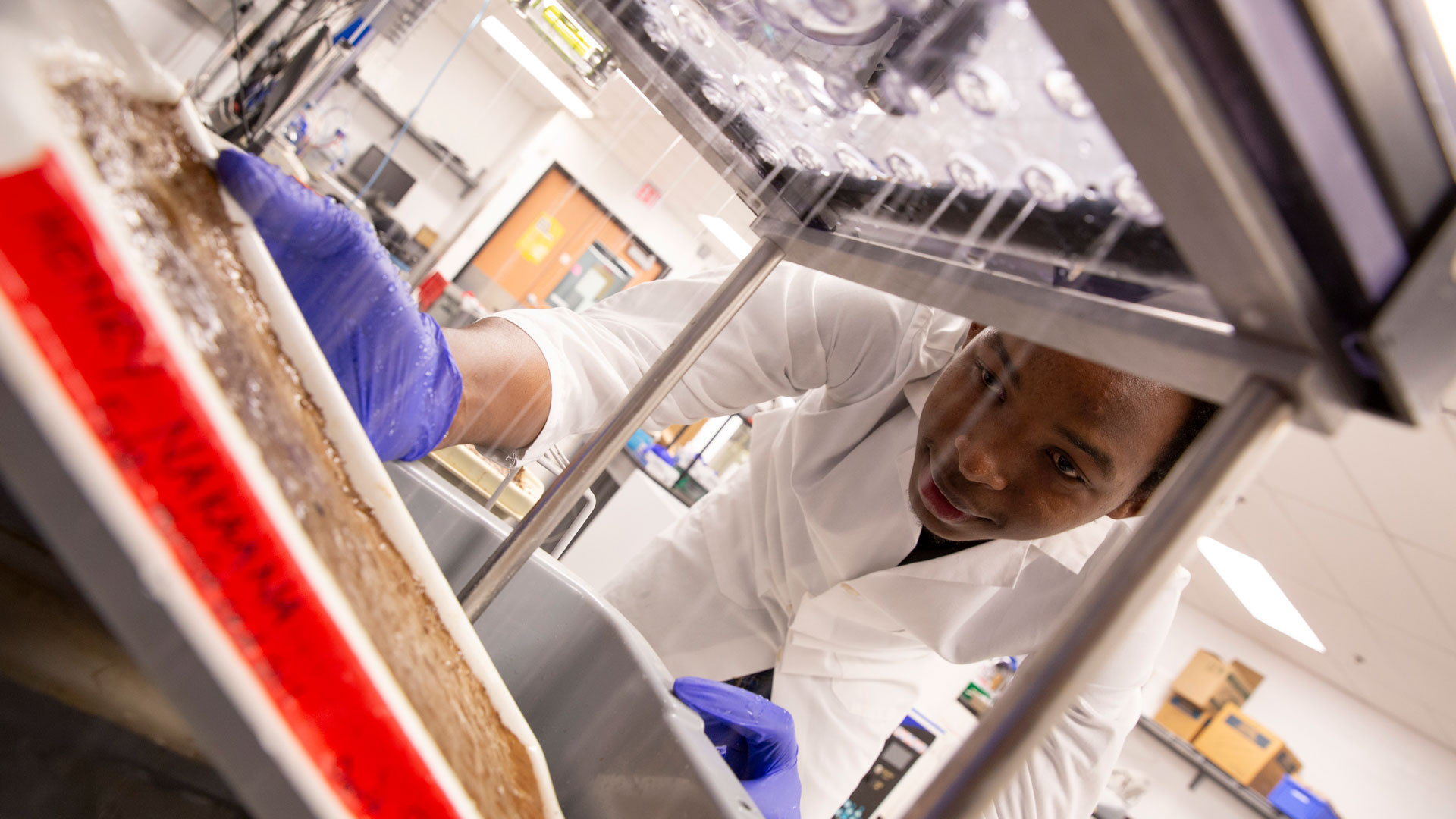
Meet student researchers advancing energy and sustainability solutions

This article is part one of a two-part series highlighting student researchers presenting at the Spring 2024 Fulton Forge Student Research Expo on Friday, April 19. Read part two. Learn more about the expo.
Developing sustainable and efficient solar energy solutions, exploring the effects of temperature on battery capacity and using fungi to support soils affected by wildfire are just some of the ways Arizona State University students are addressing real-world challenges through hands-on research.
At the Ira A. Fulton Schools of Engineering at ASU, undergraduate and graduate students have several opportunities to conduct use-inspired research in which they can apply their classroom knowledge and build new skills. Through individual projects mentored by Fulton Schools faculty members, students deliver innovation that matters in the research themes of data science, education, energy, health, security, semiconductor manufacturing and sustainability.
The Fulton Undergraduate Research Initiative, or FURI, and the Master’s Opportunity for Research in Engineering, or MORE, programs give participants valuable experiences in which they conceptualize ideas, develop plans and investigate their research questions over a semester.
Students participating in the Grand Challenges Scholars Program, or GCSP, can apply for additional funding to conduct research through the GCSP research stipend program. Conducting research is part of a GCSP student’s rigorous competency requirements designed to prepare them to solve complex global societal challenges.
These three programs enhance students’ ability to innovate, think independently and solve problems in their communities. They also benefit from the technical and soft skills they gain, which prepare them for their careers and the pursuit of advanced degrees.
Each semester, students who participate in FURI, MORE and the GCSP research stipend program are invited to present their findings at a poster session. The Fulton Forge Student Research Expo is the culmination of the students’ hard work to forge meaningful research paths and connections to make an impact.
Learn about four students who are participating in the Spring 2024 Fulton Forge Student Research Expo. Meet them and more than 100 other student investigators at the event, which is open to the public, on Friday, April 19, from 1 to 3 p.m. at the Student Pavilion on the ASU Tempe campus.

Photographer: Erika Gronek/ASU
Clara Chaves Azevedo
Clara Chaves Azevedo has always wanted to be a civil engineer. She spent much of her childhood creating mockups and building houses in video games. Now at ASU, she is conducting research to reduce the toxicity of promising perovskite materials to implement solar energy generation on windows. The second-semester first-year civil engineering student — the earliest a Fulton Schools student can participate in FURI — is working with faculty mentor Nick Rolston, an assistant professor of electrical engineering.

Photographer: Erika Gronek/ASU
Patrick Shea Jr.
Electrical engineering senior Patrick Shea Jr. started his engineering journey with ASU Online while on active duty in the U.S. Air Force as an electrical and environmental systems aircraft specialist. Now finishing his bachelor’s degree on the ASU Tempe campus, he is researching how to increase solar power output for solar modules in space and on Earth. His FURI project with faculty mentor Jennifer Kitchen, an associate professor of electrical engineering, is creating reconfigurable solar arrays that help both in shady conditions and as the solar cells age and degrade.

Photographer: Erika Gronek/ASU
Byung Gik Park
Byung Gik Park (left), an electrical engineering senior, enjoys taking apart electronics to see how they work. As a student in the FURI program, Park is working with Yoon Hwa (right), an assistant professor of electrical engineering, to explore how temperature affects battery capacity to help others better understand how to manage these power sources. Park’s research was also sponsored by materials science company W. L. Gore & Associates, which provided him with extra funding to pursue his research.

Photographer: Erika Gronek/ASU
Henry Nakaana
Civil engineering major Henry Nakaana was drawn to ASU because its focus on research and sustainability aligned with his interest in solving real-world problems with innovative, sustainable solutions that make a positive impact on the world. His FURI project with Emmanuel Salifu, an assistant professor of civil and environmental engineering, involves engineering fungi that could help support areas affected by increasingly frequent wildfires and heavy rains that make soil vulnerable to erosion and landslides. Nakaana is a first-year student in his second semester — the earliest a Fulton Schools student can participate in FURI.



































